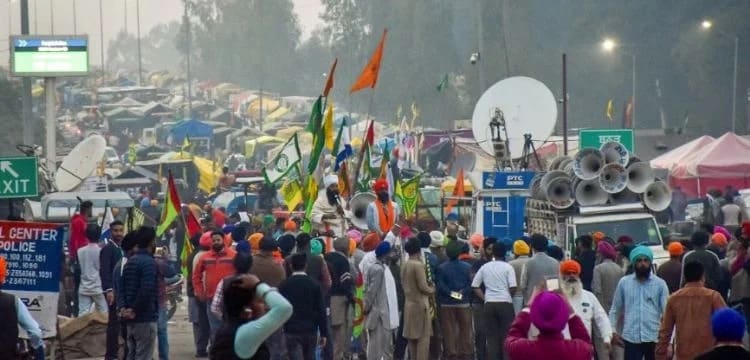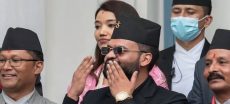[vc_row][vc_column][vc_column_text dp_text_size=”size-4″]In the ongoing “Delhi Chalo” march, Indian farmers have temporarily halted their movement for two days following the death of protesters in alleged clashes with the police near the Punjab-Haryana border. The farmers, representing multiple unions, initiated protests on February 13, advocating for an increase in floor pricing, also known as the minimum support price, for their agricultural produce. Additionally, their demands encompassed pensions and crop insurance.
Despite several rounds of discussions yielding no positive outcomes, the protestors decided to embark on a march towards Delhi from the states of Punjab, Haryana, and Uttar Pradesh. To impede their progress, authorities strategically placed barbed wire and cement blocks, creating barriers at the city borders to prevent the protesters from advancing towards Delhi.
Read more: New Delhis Strategy To Induce Rain For Reducing Smog
Responding to the escalating situation, a substantial deployment of police and paramilitary forces has been implemented by Haryana and Uttar Pradesh. Unfortunately, on Wednesday, a tragic incident unfolded as a 22-year-old protester lost his life in reported clashes with Haryana police. According to officials from the Punjab state, the protester succumbed to a fatal bullet wound.
The backdrop of violence against the protesting farmers has prompted the Indian government to take action against social media platforms. Specifically, they have urged Twitter, formerly known as Social media major X, to remove accounts and posts associated with the ongoing farmers’ protests. Twitter acknowledged complying with “executive orders” from the Indian government, resulting in the removal of various accounts and posts related to the farmers’ demonstrations.
These developments underscore the intensifying tensions surrounding the farmers’ protests, as the tragic incident and subsequent temporary suspension of the “Delhi Chalo” march add layers of complexity to an already contentious situation. The involvement of social media platforms in the narrative further highlights the broader impact and implications of the protests, both domestically and internationally.[/vc_column_text][/vc_column][/vc_row]











